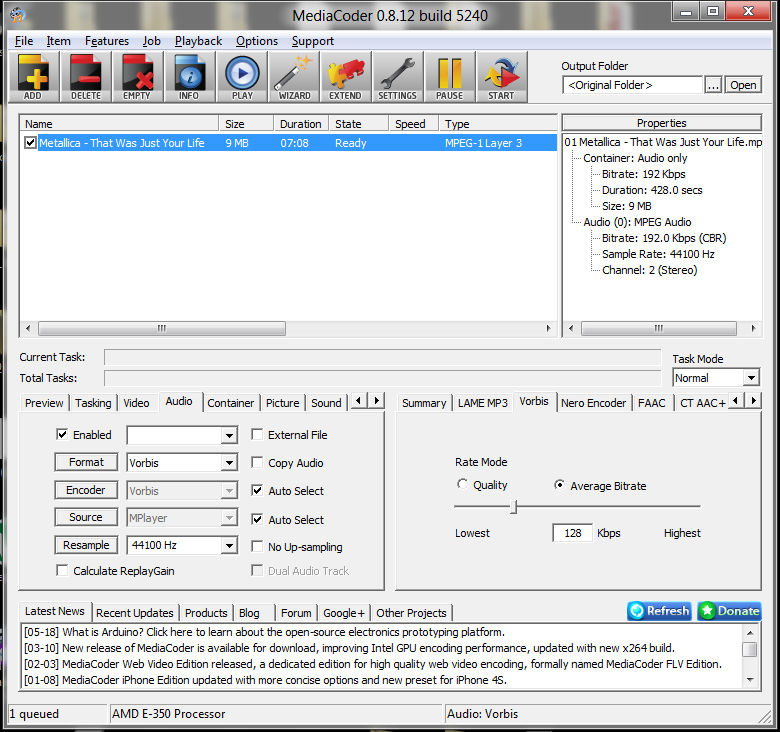
Sampling Rates range from 8000 Hz (very, very low quality) up to 192 000 Hz (very, very hi quality). Standard CD-quality audio uses a sample rate of 44.1 kHz (k means times 1000). The sample rate is measured in “Hertz” – a unit of frequency describing cycles per second. This means that the audio is sampled 44100 times every second. The sample rate is the number of times the audio is sampled per second.For example, CD audio has a sample rate of 44100 Hz. The blue waveform on top is the MP3.Ī few more terms you will come across when you deal with audio file formats are Sample Rate, Bit Rate & Bit Depth.
They are the same performance rendered to two different qualities – WAV and MP3. They simply cannot and will not work with compressed files. It is an industry standard to deliver your final audio file (2-mix) to mixing and mastering engineers in an uncompressed format. Notice how compound compression has damaged the second example below. So, it is best to try to preserve as much as you can from the beginning. It also makes any processing you did basically useless. When you start with a lossy compressed audio source (like MP3 or AAC), further compression will compound the effect of the thrown away audio information. The reason for this may be self-evident to you – but it is critical for me to explain. However, when you are recording audio or downloading samples, always shoot for the best quality you can get. This has its advantages when distributing the content. When we compress the file, it becomes significantly smaller than the original one. Lossy or compressed file types like MP3s throw away audio information to reduce the file size. It is essential to understand the difference between uncompressed and compressed audio file types. Lossless audio formats: FLAC, WMA, ALAC.Uncompressed audio formats: WAVE, AIFF & PCM.They can be categorized into 3 main groups. With that being said, we will mention several here that are very common to the majority of DAWs. Of interest, I’m using ATH-M50 (supposedly a DJ monitor set), Macbook source, no amplifier.In the world of audio, you are going to come across many different audio file types. You guys should try some of Joe Hisaishi’s work in FLAC (you can actually hear sheet music being turned, and equipment being adjusted in One summer day from Spirited away OST) as opposed to the regular CD quality rip (192 kbps ish is it?). It would have been better if we were not told which one was of which bitrate, if we were introduced the lower bitrate sample first, and if we were asked which one was of higher quality on top of which one matched the third sample. There weren’t any clear differences in vibrato for me, although I suspect that after hearing the higher quality sample and recognizing there was vibrato, I would’ve “expected” it (or my brain filled it in for me). Also, in the 128kbps, it is harder to distinguish which instrument or section was sustaining the leading note.
#Difference between 192 kbps and 320 kbps 320 kbps
in the 320 kbps sample, the trumpet-or cornet or whatever brass it was-punches the last note very cleanly, whereas this is muddled into the sound in the 128 kbps). After 2 listens of each A & Band of the sample, I got it right, mostly because of the final chord (i.e. by Mike EpsteinĪdmittedly, the difference wasn’t night and day for me. If you listen to any symphony, for example, it sounds terrible as an MP3. Typically, (current especially) rock music lacks dynamic and would likely be difficult to differentiate in a test like this, but music with a lot of pauses and rapid changes in envelope is not well encoded in MP3 format. I’ve babbled a lot, but I think this is kind of the wrong example for discussing bitrate. Anyway, my point, I guess, is that there was a big difference, even on my bad speakers, but I had trouble deciding that one was better on my bad speakers. I am guessing that there was some frequency smearing that resulted in the high-frequency portion sounding quieter. This was probably overthinking as I made the wrong choice. In the end, I chose the clip where they were “quieter” sounding as I thought this was maybe better frequency resolution. If you listen to the castanets (I think those are castanets?), they sound really different between the clips, even on my bad speakers.

I didn’t particularly think one sounded better, so I had a hard time choosing. I found that the characteristic that is most affected by bitrate – rapid high-frequency envelope changes – was clearly different between the two.

I used my garbage laptop speakers figuring that I would not be able to tell the difference because I would have argued that unless you have decent speakers, there’s no way you could tell.


 0 kommentar(er)
0 kommentar(er)
